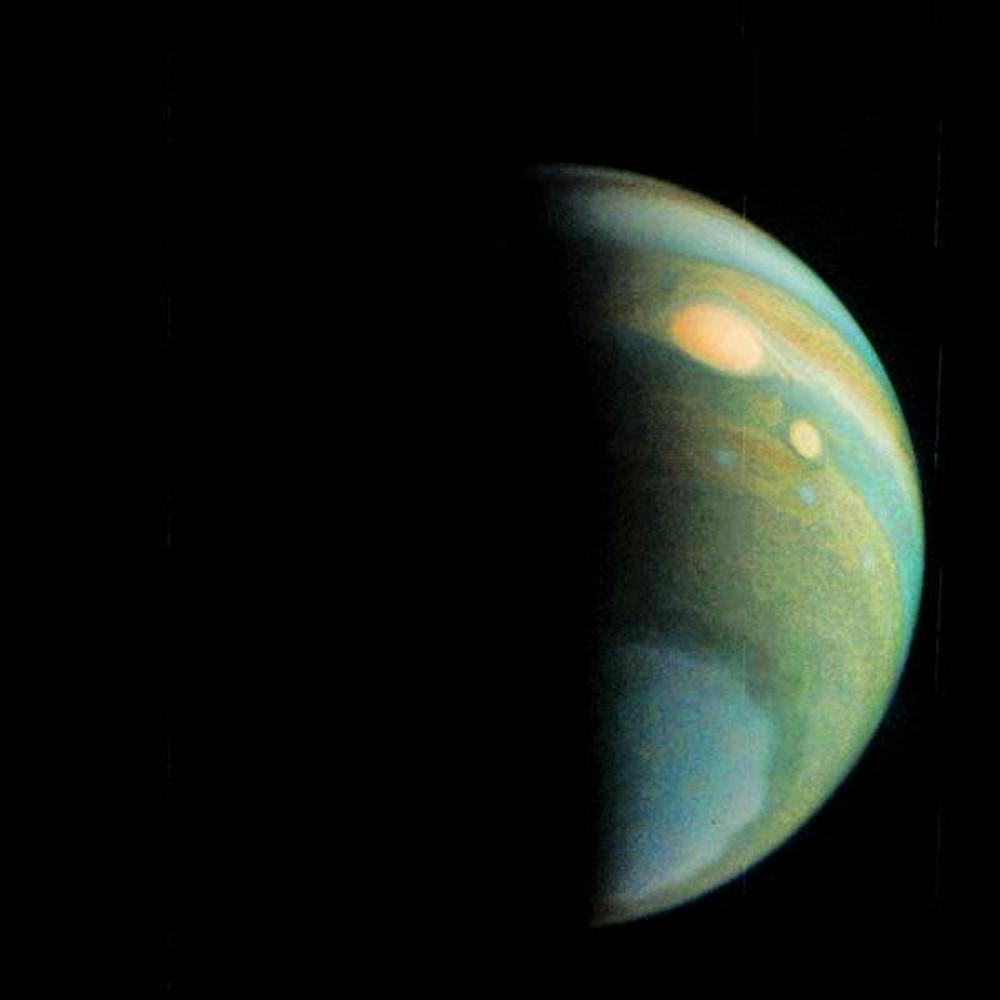In spring 2019, the James Webb Space Telescope will be launched into space from French Guiana to seek other sources of life outside the solar system. A group of scientists lead by Sarah Hörst, assistant professor of Earth and Planetary Sciences at Hopkins, has recently published its results on haze formation in simulated environments.
When observing another planet’s atmosphere through a telescope, haze oftentimes can cloud an observer’s ability to identify which gases make up that planet’s atmosphere.
Hörst and her research team’s work focuses on understanding the various conditions under which haze can develop. This is a huge step forward in helping scientists detect life in outer space.
“Part of what we’re trying to help people figure out is basically where you would want to look,” Hörst said, according to ScienceDaily.
Their results on the production rates of haze were first published in Nature Astronomy earlier this month. Further results on the color and size of the haze particles were published on March 19 in The Astrophysical Journal Letters. More results from this study regarding the optical and compositional analyses are still in progress.
“The production rates were the very, very first step of what’s going to be a long process in trying to figure out which atmospheres are hazy and what the impact of the haze particles is,” Hörst said.
The main purpose of Hörst and her colleagues’ work is to decipher the different compositions of gases that can form haze.
“The fundamental question for this paper was: Which of these gas mixtures — which of these atmospheres — will we expect to be hazy?” Hörst said.
In fact, developing a better understanding of haze in these observed planets is critical to determining whether or not they can sustain life.
“One of the reasons why we’re starting to do this work is to understand if having a haze layer on these planets would make them more or less habitable,” Hörst said.
In their experiment, the researchers developed a sophisticated Planetary Haze Research (PHAZER) Chamber that allowed them to mix a variety of gas mixtures exposed to different temperatures and metallicities.
Metallicity is a term used to describe the proportion of materials in a celestial body that are not hydrogen or helium.
There was a total of nine different mixtures, in which gases such as methane, carbon dioxide and helium were used. The gas mixtures were placed inside the PHAZER apparatus for 72 hours and then exposed to cold plasma to induce chemical reactions.
“The energy breaks up the gas molecules that we start with. They react with each other and make new things, and sometimes they’ll make a solid particle [creating haze] and sometimes they won’t,” Hörst said.
Their results showed that the gas mixtures with the highest haze production rates mostly had high concentrations of methane.
Additionally, one gas mixture that did not contain any methane produced lots of haze, indicating that there are other pathways for creating haze without methane.
“We had this idea for a long time that methane chemistry was the one true path to make a haze, and we know that’s not true now,” Hörst said.
In an interview with The News-Letter, Chao He, co-author of this study and assistant research scientist in the Department of Earth and Planetary Sciences, explained three separate effects of haze on the habitability of a planet.
“Haze particles interacting with light could affect the temperature of the atmosphere and surface of the planet,” He said. “Photochemical haze particles could provide organic materials to the surface and the haze particles could prevent energetic photons from reaching surface and thus protect life from harmful radiation.”
When asked about how haze influenced the formation of life on Earth, He gave the famous example of Miller-Urey’s primordial soup theory.
“[The] origin of life on Earth is still an open question. The famous Miller-Urey experiment provided experimental support to this ‘soup’ theory, which is that organic compounds, including amino acids, can be formed in the atmosphere of early Earth. Thus, organic haze formed in early Earth’s atmosphere could have provided starting materials for the origin of life,” he said.





